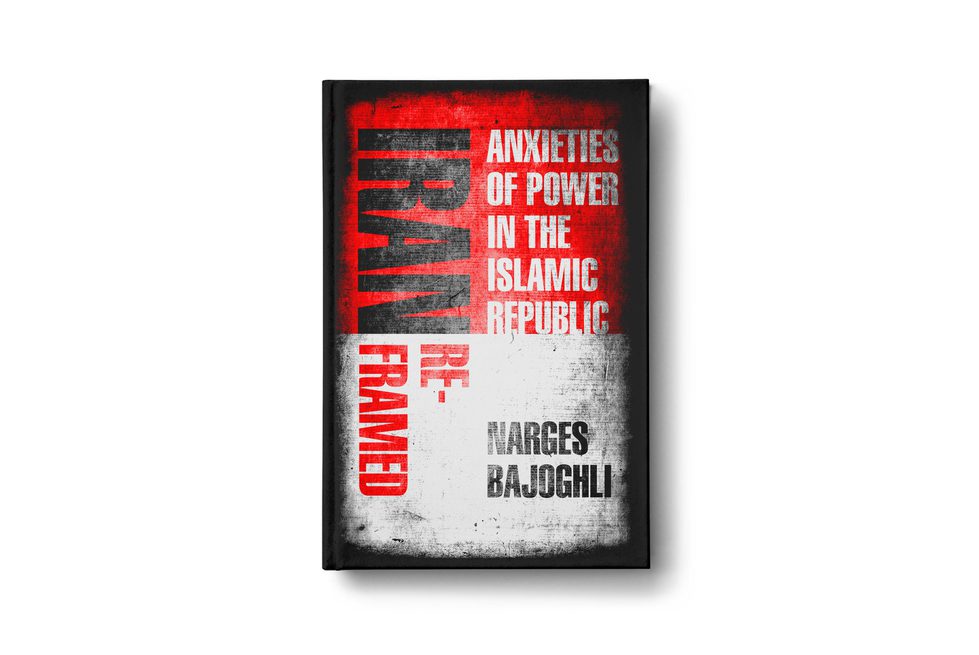Reframing the Agents of the Islamic Republic
From the Series: Book Forum: Iran Reframed
From the Series: Book Forum: Iran Reframed

Since the 1979 Islamic Revolution, Iran has occupied the popular imagination of Americans and many others in films, news, and other media that portray it as a foreboding place of religious zealots and militants. From the Iran Hostage Crisis to the extrajudicial assassinations of Iranian government officials, Hollywood and the mainstream news media frame Iran in line with the dominant Western perceptions and archetypal alignment of the forces of good (the U.S. military) versus the bad (Islamic extremists and terrorists) (Shaheen 2003). This simplistic and dangerous narrative is conjured primarily by neoconservative war hawks, who hail from the overlapping halls of politics, think tanks, and media, in the hopes of instigating and waging a new war; thus adding Iran to the long roster of MENASA (Middle East, North Africa, and South Asia) countries that the United States is at war with in some form.
The promise of ethnography (in-depth on the ground research with people) is that at its best, it will naturally present a view that is different from the top. Add to that mix anthropologists, who already have cultural fluency and connections to their fieldwork sites, and the views become even more multidimensional, what Faye Ginsburg calls the parallax effect (1995). Using the power of ethnography in her book Iran Reframed: Anxieties of Power in the Islamic Republic, Narges Bajoghli masterfully disrupts the hegemonic discourse that has fueled the United States’ decades-long aggressive foreign policy on Iran, including biopolitical violence and the violence of economic sanctions (Shakhsari 2020).
Bajoghli builds on the relationships and contacts she made working with Iran’s chemical warfare survivors, while making her film A Skin that Burns. ln Iran Reframed, which won the 2020 Margaret Mead Award from the American Anthropological Association and the Society for Applied Anthropology, she takes a unique creative non-fiction storytelling approach that foregrounds the lives and work of her Iranian interlocutors, the very state emissaries that have been the source of Western fear and propaganda.
Bajoghli takes this approach a step further by weaving academic theoretical work into the storytelling. What we see develop is a nuanced, complex, and accurate view of Iran and its people. Because she has built deeply resonant ethnographic relationships with her research subjects, including the agents of the state such as Iran’s Revolutionary Guard, Ansar Hezbollah, and the Basij, we can glimpse into the contradictions and conflicts that these men struggle with internally and externally. She humanizes a misunderstood and misrepresented segment of the Iranian population without becoming an apologist for them or the Islamic Republic.
It is important to underscore that the fieldwork Bajoghli undertook was particularly intrepid. Due to the sanctions, the U.S. State Department would not let her go to Iran for a year, which she was able to negotiate with the support of her mentors at NYU. Furthermore, gaining access to Iranian government officials and volunteers was no easy feat. The fact that they accepted her presence as a researcher is a real testimony to her extraordinary skills as an ethnographer. Thus, it is not surprising that we had virtually nothing of this quality before—for the first time, this work gives us a sense of the essential ethnographic everyday of key players in post-revolutionary Iran.
In particular, Bajoghli focuses on the Basij representational practices, looking at media producers across different types of production and venues, such as filmmakers and museum curators. Through her interviews and deep descriptions, the motivations, practices, and anxieties of the media producers come to light. For example, we see the precarious position these simultaneously committed and disenchanted state emissaries occupy, and how they find distribution work-arounds in order to get their counterstories and narratives into the hands of people who might otherwise dismiss their work by obscuring their origins or spinning it for statist purposes.
In-depth ethnographic studies naturally unsettle imperialism and disrupt hegemonic narratives, including those that drum up war. In my own ethnographic research in Afghanistan with media producers and human rights activists, I have been driven by a similar imperative to present, as accurately as possible, the complexities of the lives of my interlocutors, their motivations, fears, and desires. Beyond the news headlines and cross-national government hostilities, there are many Afghans and Iranians across all sectors of society who risk their lives everyday to lay the foundations for democracy, self-determination, and peace. Afghans have experienced over forty years of death and destruction. With brilliant ethnographic work like Iran Reframed, there is hope that Iranians and their rich cultural institutions will not be subjected to the same.
Ginsburg, Faye. 1995. "The Parallax Effect: The Impact of Aboriginal Media on Ethnographic Film." Visual Anthropology Review 11, no. 2: 64–76.
Shaheen, Jack G. 2003. "Reel Bad Arabs: How Hollywood Vilifies a People." The Annals of the American Academy of Political and Social Science 588, no. 1: 171–193.
Shakhsari, Sima. 2020. Politics of Rightful Killing: Civil Society, Gender, and Sexuality in Weblogistan. Durham, NC.: Duke University Press.